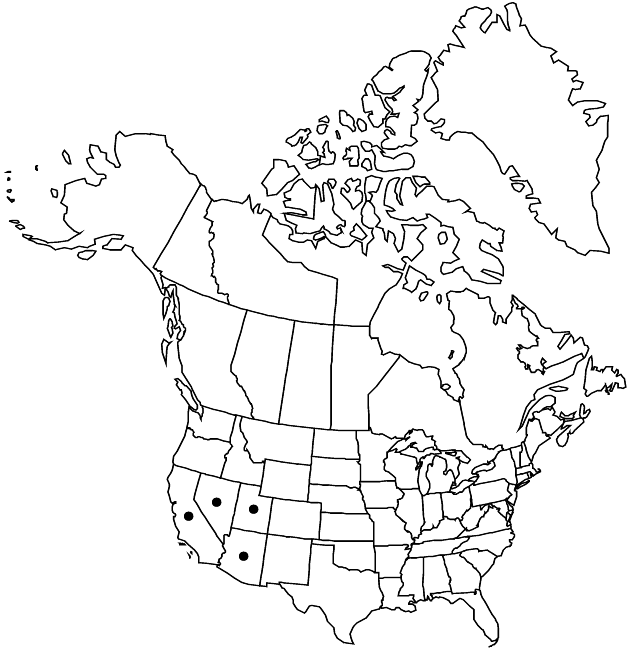Syntrichopappus fremontii
in War Department [U.S.], Pacif. Railr. Rep. 4(5): 106, plate 15. 1857.
Common names: Yellowray Fremont’s-gold yellow syntrichopappus
Treatment appears in FNA Volume 21. Treatment on page 380.
Revision as of 20:41, 16 December 2019 by FNA>Volume Importer
Stems decumbent or erect. Leaves: blades narrowly cuneate to spatulate, 5–20 mm, margins usually distally 3-lobed, sometimes entire (revolute). Peduncles 3–25 mm. Involucres 5–7 mm. Phyllaries ± 5. Rays yellow, laminae 3–5 mm. Cypselae 2–3.5 mm, sparsely to densely hispidulous; pappi of 30–40 bristles ± 2 mm. 2n = 12.
Phenology: Flowering Mar–Jun.
Habitat: Sandy or gravelly openings in deserts, creosote-bush or sagebrush scrublands, or Joshua Tree or pinyon-juniper woodlands
Elevation: 600–2500 m
Distribution

Ariz., Calif., Nev., Utah, Mexico (Baja California).
Discussion
Selected References
None.
Lower Taxa
None.
